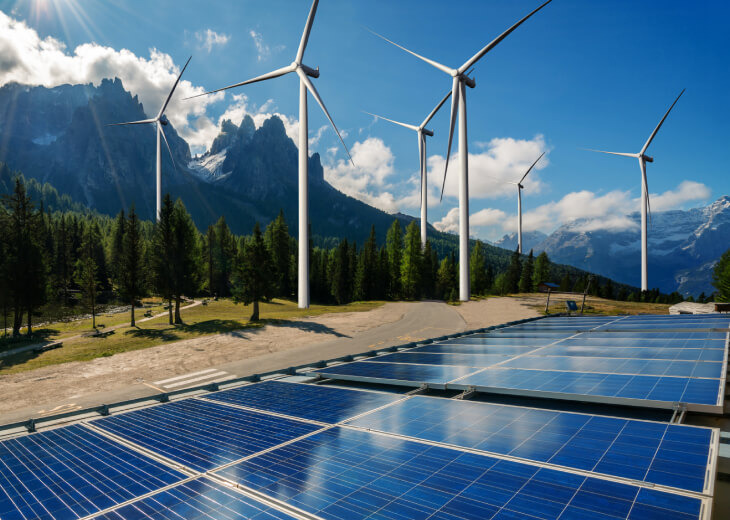Circular economy
Circular economy
We are promoting the optimization of resources, reduction of raw material consumption, and recovering waste.

Everything about bioethanol
A renewable alternative as a fuel of agricultural origin
Reading time: 4 min
The aim of achieving a society free of carbon emissions by 2050 seems especially ambitious in the area of mobility, as there are sectors in which it is complicated to reduce the carbon footprint, such as heavy road freight transportation, the aviation sector, or sea transportation. However, biofuels are a very interesting option to contribute to the challenge of decarbonization.
Biofuels or e-fuels are liquid fuels that come from renewable raw materials and one of their main assets is that they have zero or low CO2 emissions during their production and final use. Among them, we can mention biodiesel, biogas, or bioalcohols such as bioethanol.
What is bioethanol and how is it obtained?
Bioethanol is a type of alcohol that is obtained from different types of plants rich in cellulose such as sugar cane, sugar beet, or some grains such as corn. Although it is possible to cultivate these vegetable raw materials with the aim of using them directly for bioethanol production, this fuel can also be obtained from forestry residue and agricultural waste.
Today, the leading countries in the production and consumption of ethanol are Brazil and the US; this latter is also the main exporter of bioethanol in the world. In Europe, the country that consumes and exports the most bioethanol is France.
Although it may seem a novel process, in reality the first use of ethanol as a fuel was back in 1826, the date in which an American engineer devised the first ethanol-fueled combustion engine. Today, bioethanol has the same uses as the fuels used to generate other classes of energy such as heat, motor power (transportation), and electricity.
To generate electricity, a bioethanol boiler is used in which the fuel is burned and the water vapor generated makes a turbine turn that allows this energy to be produced. With regards to transport, it is used similarly to gasoline or diesel, mixed in a certain percentage with the traditional fossil fuels to reduce the emission of greenhouse gases, or used exclusively in prepared engines (such as those of flexible fuel vehicles). It is also very useful to heat rooms, as is the case with bioethanol fireplaces and heaters.
According to the Spanish Association of Petroleum Product Operators (AOP), bioethanol is divided into three types, depending on the raw material used for its production.
Advantages of bioethanol
It reduces CO2 emissions
Although it produces CO2 when burned, it actually comes from the CO2 absorbed by the plant as it grows, and it is also much lower than that generated by fossil fuels; the difference ranges from 19% (from corn crops) to 86% (from biomass residues).
It doesn’t generate waste
Its combustion doesn’t generate smells or waste, and the CO2 generated can be captured and used in other industrial applications, such as the carbonation of drinks or freezing. For example, it allows the amount of rubbish generated in an urban center to be reduced.
It boosts the local economy
The increase in the demand of this fuel brings with it greater employment opportunities. As well as needing personnel to work at the bioethanol plants, jobs are created in the agricultural sector, to supply the raw materials and other related sectors.
Bioethanol fireplaces and heaters
Bioethanol fireplaces and heaters are an alternative to bear in mind to heat certain rooms not just in homes, but also in businesses, such as the case with restaurants and cafés. For example, they can be used to heat terraces in winter, as their heating power is significant. They work with a small biofuel deposit that is released and burns when the flame is ignited.
Repsol and bioethanol
It its commitment to the circular economy as one of the pillars to transform its industrial centers into large multienergy hubs, Repsol and IMECAL — a Valencian metal company — have created the company PERSEO Biotechnology, in which Repsol has a 25% stake.
Repsol Corporate Venturing
We invest in startups that develop technology or innovative businesses to implement them at Repsol.
Circular economy
We are promoting the optimization of resources, reduction of raw material consumption, and recovering waste.

What is the energy transition?
Beyond a shift to a decarbonized economy.